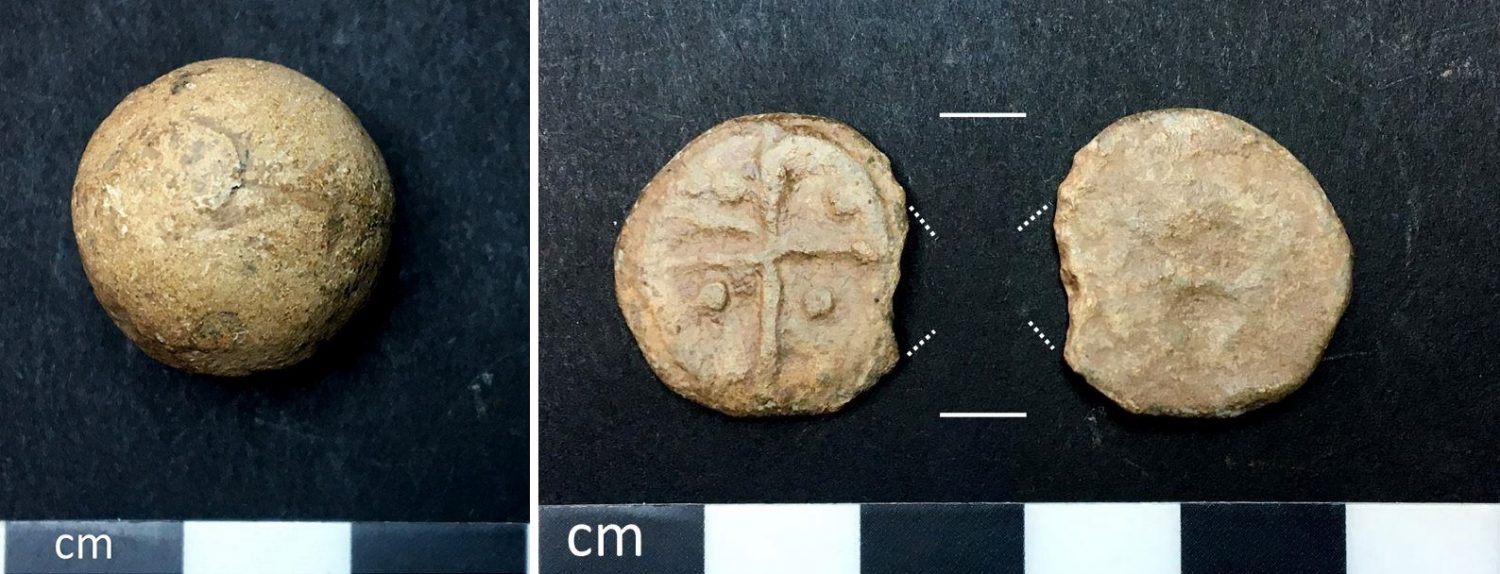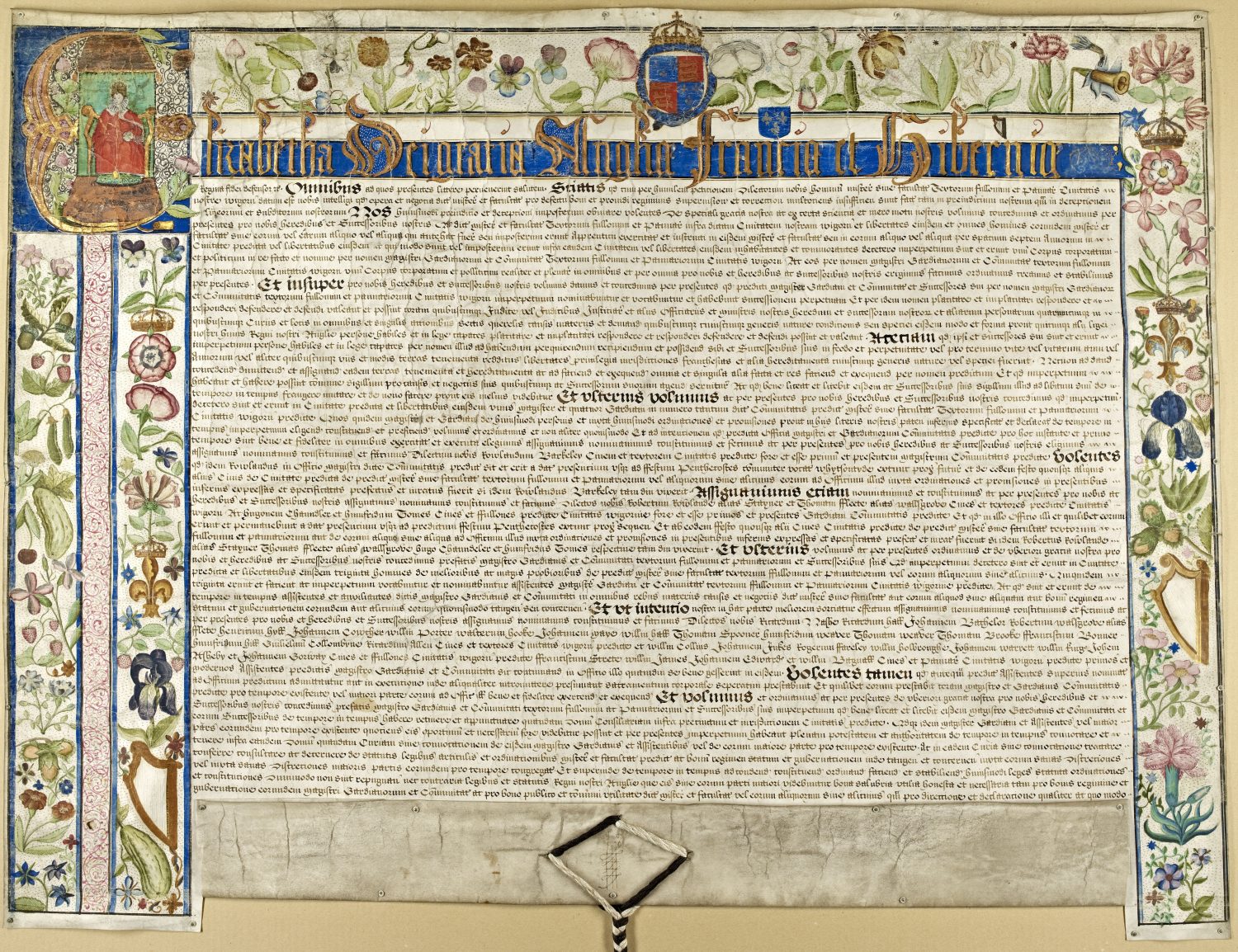Find of the Month – November 2018
- 5th December 2018
Archaeologists don’t metal detect, do they? Walk over a ploughed field and you’re bound to see bits of pot and metal sticking out the ground. Artefacts are easily disturbed and moved over time from their original location into the topsoil – metal detecting is an easy way to check for interesting finds missed in the topsoil stripped off by a digger.
In November, a customs seal and piece of lead shot were the reward for our archaeologists checking the machine excavated topsoil heaps. Despite few archaeologically features across the site, it lies near to a registered battlefield: the skirmish at Powick Bridge in 1642 and Battle of Worcester in 1651, which ended the Civil War.

Lead shot (left) and both sides of lead seal (right) – dotted lines show where connecting strip would have joined this fragment to another disc.
Intriguingly, the lead shot appears to have been fired but shows little impact damage. Perhaps it missed its target and landed on soft ground. Given its size and weight (around 16 bore, which comes from the number of bullets to a pound of lead), the shot is too large for a pistol or carbine yet too small for a musket. It is, however, a good size for a 17th century ‘bastard musket’. A shot fired during the Civil War then? Although hard to prove, this seems likely. It’s interesting to wonder who fired it and which side they were on. Were they a skilled soldier, or unwilling recruit? A local or far from home?
Our second star find comes from a more peaceful, yet often resented endeavour: taxation. During the 12th and 13th centuries, cloth production and trade began to be regulated and taxed. Early seals to prove that rolls of cloth had been inspected and taxed were probably wax, but by the 1380s lead seals came into use.
This fragment of a lead seal was probably used to mark cloth, although other goods were taxed. Cloths seals are usually found broken, but were originally two or four discs connected by a narrower strip that was folded over the edge of the fabric. Some seals contained a pin that could be pushed through the fabric for security. Once inspected, the cloth seal was then stamped. Designs generally denoted the inspector, location taxed or quality of cloth.

Charter from Elizabeth I to the clothiers’ of Worcester, written in 1590 (© Clothiers’ Company – reproduced with their kind permission).
One of the oldest documents in our county archives, held at The Hive, is a charter from Elizabeth I in 1590 to Worcester Clothiers’ Company. Cloth making became an important industry in Worcester – records from 1511 tell us that Worcestershire cloths were sold abroad in the Low Countries. Much was sent overland to London, for dyeing, or sailed down the River Severn to Bristol.
Despite the alnage system of regulation and taxation being scrapped in 1724, lead seals continued to be used a cloth labels into the 19th century. Look closely at the photo above and you can see a section of rough edge, where the connecting strip has snapped off. Unfortunately the cross and dot design on this seal is not a record type, but it’s likely to be medieval. As is the case now, some people will always try to get out of paying tax if possible though: fake seals are known.
Both objects have interesting stories to tell, despite losing their originally archaeological context. This just goes to show that it’s always worth checking the spoil heap!
The Portable Antiquities Scheme works with clubs and the public to record metal detector and stray finds. Please remember to get permission from the landowner before metal detecting. You can find out more information at: www.finds.org.uk/getinvolved
Post a Comment